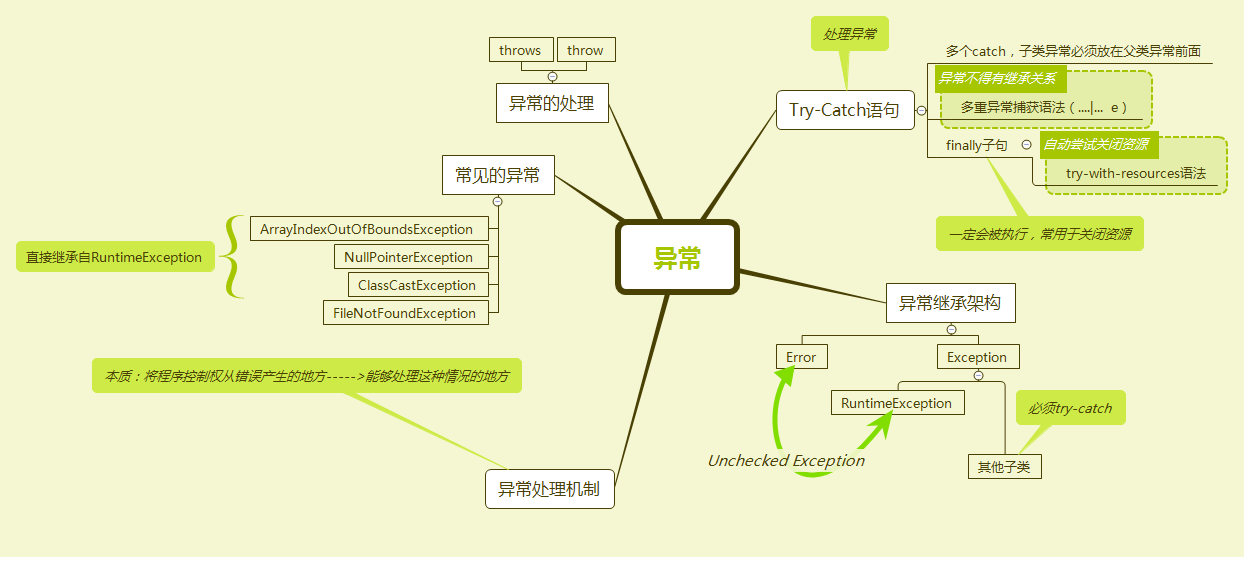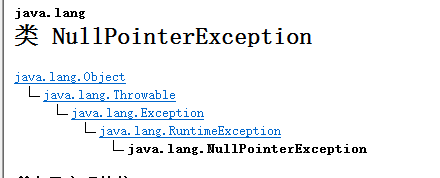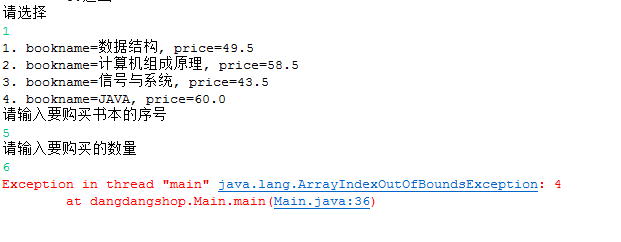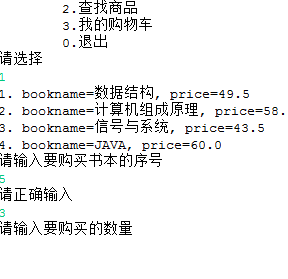201521123002《Java程序设计》第9周学习总结
1. 本周学习总结
1.1 以你喜欢的方式(思维导图或其他)归纳总结集合与泛型相关内容。

2. 书面作业
本次作业题集异常
1.常用异常
题目5-1
1.1 截图你的提交结果(出现学号)

1.2 自己以前编写的代码中经常出现什么异常、需要捕获吗(为什么)?应如何避免?
太久的记不起了,那就拿上周的举个例子,比如在退栈的时候如果栈为null就会出现NullPointerException
从图片可以看到NullPointerException直接继承自RuntimeException,所以不用捕获
在退栈的时候要判断一下
!stack.empty(),这样就能避免抛出异常。
1.3 什么样的异常要求用户一定要使用捕获处理?
除了Error与RuntimeException及其子类以外的异常都是Checked Exception,都需要捕获处理。
2.处理异常使你的程序更加健壮
题目5-2
2.1 截图你的提交结果(出现学号)

2.2 实验总结
本题出现了一次答案错误,开始我用
int n=sc.nextInt()输入数组的大小,而后用sc.nextLine()输入数组的内容这样就会出现
从图片上看多输入了一个空字符,这是因为在输入n后敲击回车,那么这个回车还没被消化掉,那么会被next.Line读入这样就会导致结果错误,那么在读入数组内容的时候用sc.next()就能解决。
3.throw与throws
题目5-3
3.1 截图你的提交结果(出现学号)

3.2 阅读Integer.parsetInt源代码,结合3.1说说抛出异常时需要传递给调用者一些什么信息?
public static int parseInt(String s) throws NumberFormatException {
return parseInt(s,10);
}
public static int parseInt(String s, int radix)
throws NumberFormatException
{
/*
* WARNING: This method may be invoked early during VM initialization
* before IntegerCache is initialized. Care must be taken to not use
* the valueOf method.
*/
if (s == null) {
throw new NumberFormatException("null");
}
if (radix < Character.MIN_RADIX) {
throw new NumberFormatException("radix " + radix +
" less than Character.MIN_RADIX");
}
if (radix > Character.MAX_RADIX) {
throw new NumberFormatException("radix " + radix +
" greater than Character.MAX_RADIX");
}
int result = 0;
boolean negative = false;
int i = 0, len = s.length();
int limit = -Integer.MAX_VALUE;
int multmin;
int digit;
if (len > 0) {
char firstChar = s.charAt(0);
if (firstChar < '0') { // Possible leading "+" or "-"
if (firstChar == '-') {
negative = true;
limit = Integer.MIN_VALUE;
} else if (firstChar != '+')
throw NumberFormatException.forInputString(s);
if (len == 1) // Cannot have lone "+" or "-"
throw NumberFormatException.forInputString(s);
i++;
}
multmin = limit / radix;
while (i < len) {
// Accumulating negatively avoids surprises near MAX_VALUE
digit = Character.digit(s.charAt(i++),radix);
if (digit < 0) {
throw NumberFormatException.forInputString(s);
}
if (result < multmin) {
throw NumberFormatException.forInputString(s);
}
result *= radix;
if (result < limit + digit) {
throw NumberFormatException.forInputString(s);
}
result -= digit;
}
} else {
throw NumberFormatException.forInputString(s);
}
return negative ? result : -result;
}
显示是哪一种异常,和出现异常的原因。
其次可能就是一些定位啊,让调用者能更快的锁定异常的地方。
4.函数题
题目4-1(多种异常的捕获)
4.1 截图你的提交结果(出现学号)

4.2 一个try块中如果可能抛出多种异常,捕获时需要注意些什么?
子类异常必须放在父类异常前面。
5.为如下代码加上异常处理
byte[] content = null;
FileInputStream fis = new FileInputStream("testfis.txt");
int bytesAvailabe = fis.available();//获得该文件可用的字节数
if(bytesAvailabe>0){
content = new byte[bytesAvailabe];//创建可容纳文件大小的数组
fis.read(content);//将文件内容读入数组
}
System.out.println(Arrays.toString(content));//打印数组内容
5.1 改正代码,让其可正常运行。注1:里面有多个方法均可能抛出异常。注2:要使用finally关闭资源。
byte[] content = null;
FileInputStream fis = null;
int bytesAvailabe = 0;
try {
fis = new FileInputStream("testfis.txt");
bytesAvailabe = fis.available();//获得该文件可用的字节数
if(bytesAvailabe>0){
content = new byte[bytesAvailabe];//创建可容纳文件大小的数组
fis.read(content);//将文件内容读入数组
}
}catch(FileNotFoundException e) {
e.printStackTrace();
}catch(IOException e) {
e.printStackTrace();
} finally{
try {
fis.close();
} catch (IOException e) {
e.printStackTrace();
}
}
System.out.println(Arrays.toString(content));//打印数组内容
}
}
使用了try-cathch捕获异常输出。
5.2 使用Java7中的try-with-resources来改写上述代码实现自动关闭资源.
try (FileInputStream fis = new FileInputStream("testfis.txt")){
bytesAvailabe = fis.available();//获得该文件可用的字节数
if(bytesAvailabe>0){
content = new byte[bytesAvailabe];//创建可容纳文件大小的数组
fis.read(content);//将文件内容读入数组
}
}
改动处:将尝试自动关闭资源的对象生成写在try之后的圆括号中。
6.重点考核:使用异常改进你的购物车系统(未提交,得分不超过6分)
举至少两个例子说明你是如何使用异常处理机制让你的程序变得更健壮。
说明要包含2个部分:1. 问题说明(哪里会碰到异常)。2.解决方案(关键代码)
问题说明:如图我们可以看到,菜单要求输入整型但是输入为字符或者其他非整型就会出现错误
解决方案:
int x;
try{
x=Menu.showmenu();
}catch(InputMismatchException e){
System.out.println("请正确输入");
x=Menu.showmenu();
}
修改后
问题说明:当输入5时超过了保存书籍数组的大小,这是就会显示数组越界。
解决方案:
if(m>=5){
System.out.println("请正确输入");
m = in.nextInt();
}
修改后:
7.选做:JavaFX入门
如果未完成作业1、2的先完成1、2。贴图展示。如果已完成作业1、2的请完成作业3。内有代码,可在其上进行适当的改造。建议按照里面的教程,从头到尾自己搭建
8.选做:课外练习
JavaTutorial中Questions and Exercises
3. 使用码云管理Java代码

4.课外阅读 (选做)
任选下面一篇文章阅读,列举出几点自己能理解的异常处理最佳实践。
Best Practices for Exception Handling
Exception-Handling Antipatterns Blog
The exceptions debate









